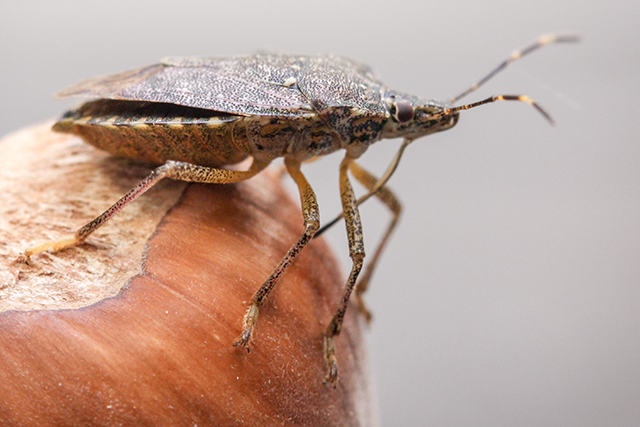Crop Pest Losses & Impact Analyses show long-term results of IPM strategies
Isaac Sandlin and Hans Luh of the Oregon IPM Center crunch the numbers to find the impacts on NW Crops
One of the biggest roadblocks in IPM adoption is the perceived risk of implementing new tactics and strategies. IPM, by its nature, is a long-term approach to pest management. Also, by its nature, IPM success is measured differently depending on the crop or pest: what’s perceived as working in one system may be falling short elsewhere. With so much uncertainty, how are producers convinced to start or continue using IPM strategies? Crop Pest Loss and Impact Analyses, or CLIPAs, a signature program of the Western IPM Center, aim to put IPM’s money where its mouth is by revealing the trends following the adoption of different tactics using a pest-by-pest, crop-by-crop approach.
CPLIA’s aim to put a dollar value on the direct damage and management costs of specific crop pests.
CPLIAs start with data — a lot of data — collected from growers, consultants, and extension agents. The surveys are worksheets designed to capture as much information as possible to fully understand the impacts of pests and pest management strategies on crop loss. The big questions that the surveys aim to answer are: “what are the major impacts by pests to growers?” and “Do the IPM tactics translate into reductions in yield loss and economic gains?” For example, respondents answer detailed questions about acreages, an estimated price per unit of the crop, maximum attainable and actual yields, loss estimates caused by specific pests, pest-by-pest information on acres infested, and costs of control. Voluntary, heroic participants complete the intensive surveys during industry meetings and can take hours to complete. While the data collected each year is useful, the project’s real strength comes from the annual collection of data that can reveal trends and impacts over time.
The current process was developed in the 1990s by Peter Ellsworth and Al Fournier of the Arizona Pest Management Center, who compiled data about pest impacts and pest management strategies for cotton. A report compiling two decades of survey data shows reductions in pest pressure and the need for pesticide inputs following the implementation of IPM strategies. The team currently continues to collect data on cotton, melons, and lettuce. Arizona Pest Management Center and the Western IPM Center helped develop the process for Oregon crops with Katie Murray of the Oregon IPM Center.
In Oregon, the process has been initiated for a handful of crops: peppermint, onions, hazelnuts, sweet cherry, and cranberry. Isaac Sandlin and Hans Luh have been working on compiling, analyzing, and visualizing the data collected from crop consultants, growers, and other experts about specific pests and practices in peppermint and onions. One of the main challenges has been designing a framework to analyze the data sets annually, rather than reinvent an analysis every year. To solve this issue and make his work reproducible, Isaac uses the open-source programming language R to hard code all the data analyses and visualizations used in the project.
The data are collected via web-based surveys and stored in OIPMC’s servers on the OSU campus. From there, Isaac uses R, a statisical software package, to import, anonymize, and clean respondent data from the database. All analyses are standardized across the project, so the final reports are consistent across crops.
“Because I have written code that automates this process, it is theoretically possible to perform these analyses many times every year for different crops. The challenge now is deploying our surveys and gaining the trust of the growers and consultants so that they are willing to share the information that eventually becomes the data used in this project.” Isaac says that the initial feedback from collaborators has been very positive. “The data collected here provides big picture perspective to growers, IPM consultants, and researchers which helps them reflect on the effectiveness of their IPM decisions.”
2020 has also brought its share of unique challenges and opportunities. Because of the inability to do in-person surveys due to Covid-19 restrictions, data could not be collected this year. However, it also revealed the need to develop alternative ways to deliver surveys. Hans is working on splitting the survey into multiple sections so that it does not need to be completed in a marathon session. He is also working on ways to deliver the survey remotely. If participants have direct access to records while taking the survey, they can increase the engagement and accuracy of the responses.
The first CPLIA produced for Oregon Mint is will be available soon from OSU Extension publications. The CPLIA for onions is presently being reviewed, and drafts for cherry and hazelnuts should be available by the end of the spring 2021. With more efficient survey methods, the hope is that the process can continue for many years and reveal the economic impacts of pests and pest management methods on Oregon crops.
Find out more: Pest Losses Impact Assessment Surveys
This article appears in Oregon IPM Insider, Vol 2 Issue 1, Winter 2021.


